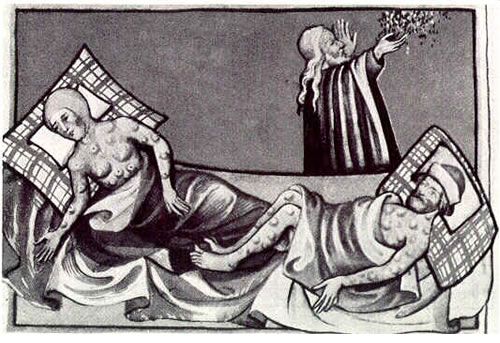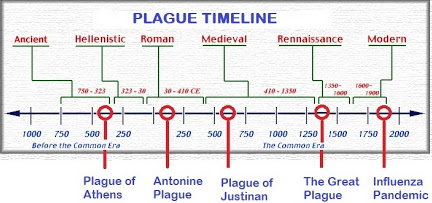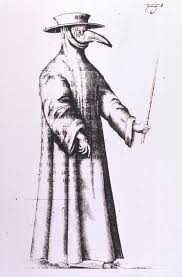When was the Bubonic Plague?
Contents
The 13th century was a grim period in the history of the Middle Ages. The world at large combated against the deadly outbreak of bubonic plague that first hit the Asian country of China in the year 1330.
What is the Bubonic Plague?
What caused the Bubonic plague in the Middle Ages?
Plague is an extremely infectious and vile disease caused by a bacteria known as Yersinia Pestis. This kind of bacteria is typically found in rodents such as rats and also in the fleas that feed on the rodents. Animals and human beings contract dangerous disease from flea or rodent bites.

Once humans are infected with bubonic plague, it spreads very quickly infecting other people. A person affected by bubonic plague develops fever and painful swellings or buboes of the lymph glands. The killer disease also causes red and black spots on the human skin.
What were the effects of the black death?
When a person caught the plague, he/she had a sudden fever with chills and headache. He also developed swollen limbs which became very painful. They were called buboes.
1347, A Dark Period in Europe’s History

Soon after China, the outbreak of bubonic plague spread all over Europe and Western parts of Asia. In the medieval year 1347, Italian merchant ships carried plague inflicted people when it entered Sicily Port after travelling to China. Within a few days, the deadly plague spread in Sicily and other parts of Europe.
Realizing that the Italian merchants had brought the disastrous plague to them, the people of Sicily threw them out of the city. Alas, the disease had gripped the city and a large number of people were already infected. Such was the fear of plague that people started abandoning their sick family members and friends.
Only the friars and the nuns did their duty and cared for the sick. Thousands of dead bodies lay waste as no one was there to offer them a proper Christian burial.
Bubonic Plague was also called as Black Death
Plague disease struck and killed people in no time, leaving behind decaying bodies and terrible fear in the minds of the healthy ones. In the same year, in the month of August, the plague had entered England and the English named it as ‘The Black Death’.
It was one of the darkest periods in medieval times. It was like a terrifying killer was let loose all across Europe.
The medieval medicines, herbs, and potions were useless against the dark power of bubonic plague. Slowly, apart from fleas, humans also became a natural carrier of the disease and between 1347 to 1353 period, almost 25 million people died as victims of the “Black Death’. Soon, one-third of the European population was dead.
Popular medieval scholar Petrarch lost his lady love ‘Laura’ to Black Death.

The Public Panic & Masks used by Doctors
The Black Death had reached Paris, London, Lyon and Bordeaux by the middle of the year in 1348. Doctors and physicians tried to treat the other symptoms that included fever, chills, diarrhoea, vomiting, and aches, but to no avail.
Plague doctors started wearing special masks with a bird-shaped beak for protection, as they believed the disease was airborne.
The monstrous disease seemed to spread evenly through the lightest of touches or through clothing. Once a person contracted the disease, it spread throughout the body.
Soon, black spots began appearing in the skin and huge boils started developing in the groins or armpits. Blood and greenish pus seeped out of them. It was a terrible spectacle and death followed suit.

Attempted Cures for Black Death
Treatment for this dreaded disease during the Middle Ages was vague and clueless. The physicians of the medieval period had no idea what caused the plague and there was no definite cure.
Tried Remedies for Treating Black Death
-
For headaches, doctors used lavender, rose, and sage
-
Vomiting or nausea was relieved with balm, mint or wormwood
-
Liquorice was given for lung problems
-
Vinegar was used to cleanse
-
Physicians tried to treat the buboes and swelling by lancing and then applying a hot poultice made of butter, garlic, and onions.
-
Some doctors even tried treatment with arsenic, dried toad or lily roots
Black Death Primary Sources Found in Modern Research

Historical scientists suggest that the medieval outbreak of Black Death seemed to agree with the weather conditions in Asia and not the European climate. As per their analysis, Giant Gerbils (rodents) and their explosive population in Asia along with plague bacteria-infected fleas was the primary source of the airborne disease.
How did the black death spread so quickly?
The rodents slowly made their journey to Europe via the Silk Road routes constantly used for trade. Rodents, fleas and plague-infected people showed up in the major harbour cities of Europe to spread the killer disease across the continent.

How long did the black plague last?
Black Death reigned terror till the mid 14th century. However, this loathsome disease resurfaced many times throughout centuries killing almost 100 million people in the world by the end of the 18th century. Even the animals could not escape its deathly hold. Innumerable cows, sheep, pigs, goats, and chickens perished along with people.
Human beings cruelly abandoned their sick loved ones in a desperate attempt to protect their own-selves against the heinous bubonic plague.
How did the bubonic plague end?
Since the disease was highly contagious, it is believed that the bubonic plague was controlled through the right implementation of isolation and quarantine. The people who were uninfected would rarely leave their homes isolating the sick ones in separated places.
Wealthy people often left densely populated cities and moved to the countryside to stay safe.
Economic effects of the black death
Like every other aspect, the black death had a significant impact on the economy of Europe in medieval times. The relationship between the landowners and the peasants who worked in those lands suffered a great impact. Since many people died, there became a shortage in the labour.
It became hard to find people who would work in the fields. The peasants started demanding more wages while the English law tried to keep wages from rising. A statutory law was set to command every healthy person under sixty to work for anyone who would hire him. If the workers refused to do so or demanded more wages they would be fined and even sent jails.
